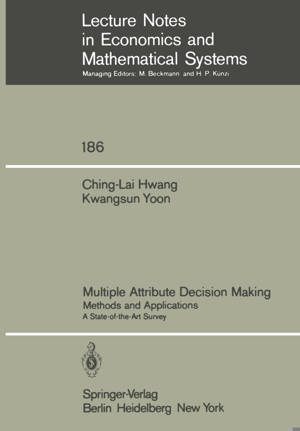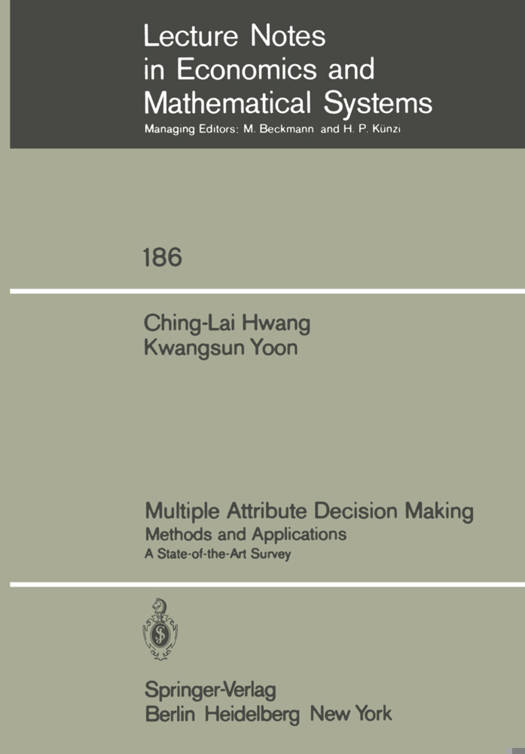
Bedankt voor het vertrouwen het afgelopen jaar! Om jou te bedanken bieden we GRATIS verzending (in België) aan op alles gedurende de hele maand januari.
- Afhalen na 1 uur in een winkel met voorraad
- In januari gratis thuislevering in België
- Ruim aanbod met 7 miljoen producten
Bedankt voor het vertrouwen het afgelopen jaar! Om jou te bedanken bieden we GRATIS verzending (in België) aan op alles gedurende de hele maand januari.
- Afhalen na 1 uur in een winkel met voorraad
- In januari gratis thuislevering in België
- Ruim aanbod met 7 miljoen producten
Zoeken
Multiple Attribute Decision Making
Methods and Applications a State-Of-The-Art Survey
Ching-Lai Hwang, Kwangsun Yoon
€ 90,95
+ 181 punten
Omschrijving
This mono graph is intended for an advanced undergraduate or graduate course as weIl as for the researchers who want a compilation of developments in this rapidly growing field of operations research. This is a sequel to our previous work entitled "Multiple Objective Decision Making--Methods and Applications: A State-of-the-Art Survey," (No. 164 of the Lecture Notes). The literature on methods and applications of Multiple Attribute Decision Making (MADM) has been reviewed and classified systematically. This study provides readers with a capsule look into the existing methods, their char- acteristics, and applicability to analysis of MADM problems. The basic MADM concepts are defined and a standard notation is introduced in Part 11. Also introduced are foundations such as models for MADM, trans- formation of attributes, fuzzy decision rules, and methods for assessing weight. A system of classifying seventeen major MADM methods is presented. These methods have been proposed by researchers in diversified disciplines; half of them are classical ones, but the other half have appeared recently. The basic concept, the computational procedure, and the characteristics of each of these methods are presented concisely in Part 111. The computational procedure of each method is illustrated by solving a simple numerical example. Part IV of the survey deals with the applications of these MADM methods.
Specificaties
Betrokkenen
- Auteur(s):
- Uitgeverij:
Inhoud
- Aantal bladzijden:
- 269
- Taal:
- Engels
- Reeks:
- Reeksnummer:
- nr. 186
Eigenschappen
- Productcode (EAN):
- 9783540105589
- Verschijningsdatum:
- 1/02/1981
- Uitvoering:
- Paperback
- Formaat:
- Trade paperback (VS)
- Afmetingen:
- 170 mm x 244 mm
- Gewicht:
- 453 g

Alleen bij Standaard Boekhandel
+ 181 punten op je klantenkaart van Standaard Boekhandel
Beoordelingen
We publiceren alleen reviews die voldoen aan de voorwaarden voor reviews. Bekijk onze voorwaarden voor reviews.









